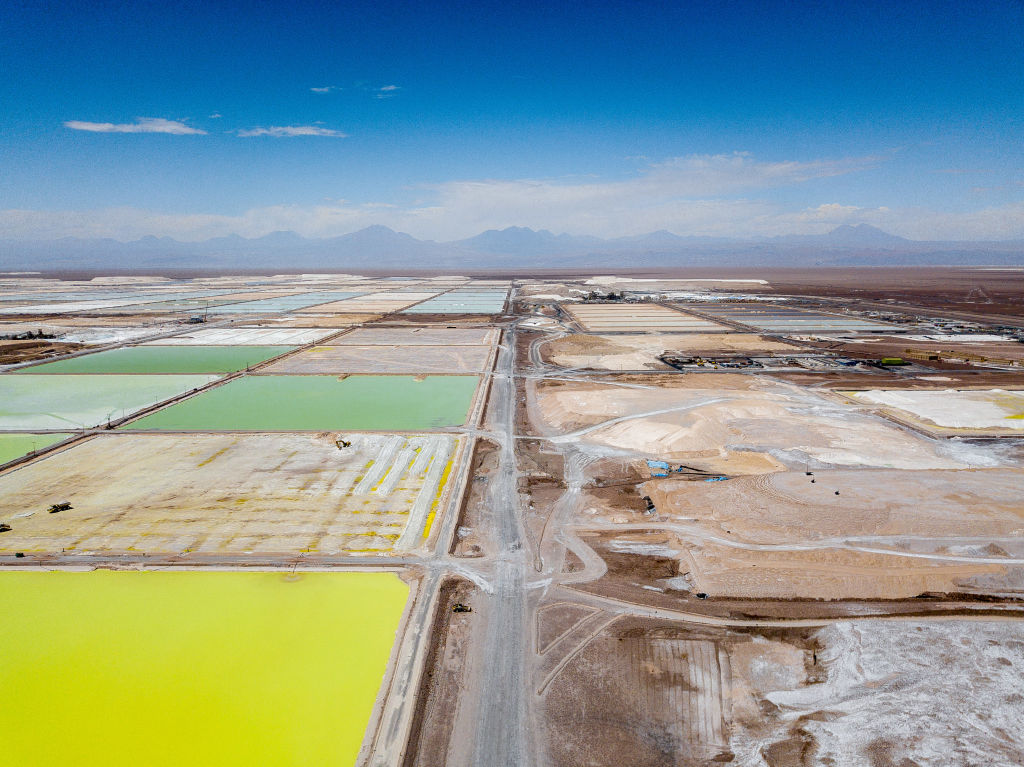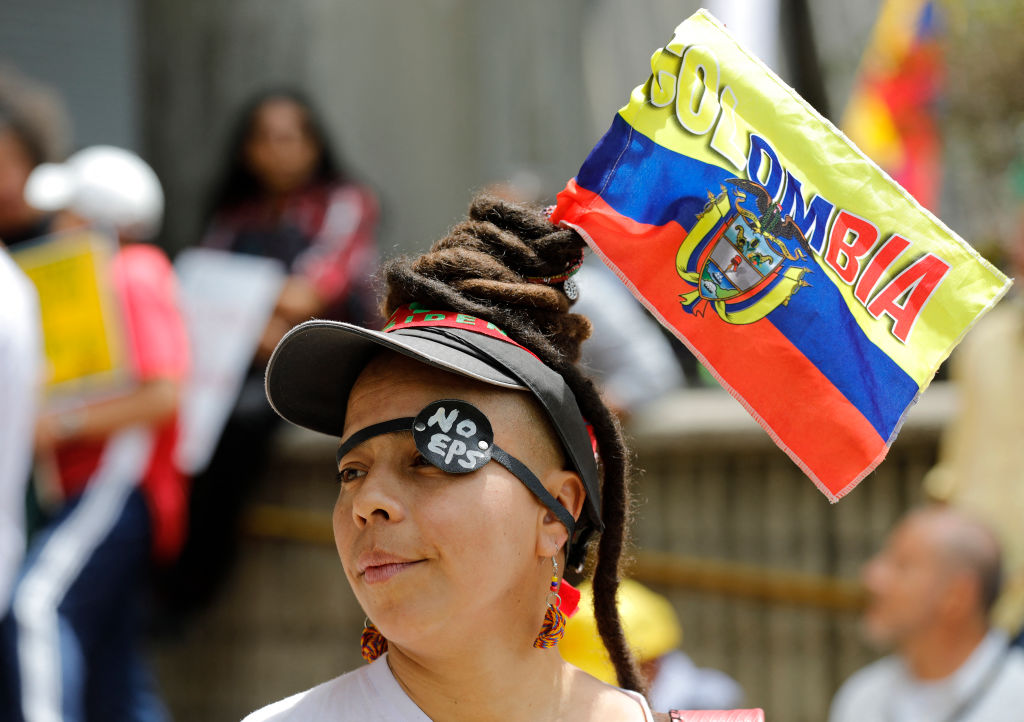Interview: Gustavo Cañonero on LatAm Responses to the Economic Downturn
Interview: Gustavo Cañonero on LatAm Responses to the Economic Downturn
The managing director and head of emerging markets economic research at Deutsche Bank analyzes the regional impact of the global financial crisis in an exclusive AS/COA interview.
“Given their recent performance and the need for external financing, Eastern Europe now is more in need of multilateral help than Latin America.”
In an exclusive interview conducted by AS/COA Director of Policy Jason Marczak, Gustavo Cañonero, managing director and head of emerging markets economic research at Deutsche Bank, analyzes Latin American responses to the economic downturn. He also discusses the latest growth prospects for 2009, reactions to President-elect Obama’s economic team, and the role of international financial institutions in the near future. Stay tuned for additional AS/COA interviews with key economists and policymakers on the global economic situation.
AS/COA: On Monday, December 1, the National Bureau of Economic Research officially declared that the U.S. has been in a recession for the last year. With this, should we expect a financial reaction from Latin American economies, especially those closest tied to the United States?
Cañonero: Latin America is affected by the global situation not only because of the U.S. recession but also because of what that means for financing for emerging markets in general and Latin America in particular. The recession is one dimension of the external shock. Others dimensions include this lack of financing and the significant fall in commodity prices and resources for Latin American producers. In general, for Latin America, this will imply a much tighter situation and probably a significant slowdown in economic growth. Policy reactions will depend on the degree of freedom of individual economies. Independent of that reaction, a sharp slowdown in most of the countries of the region—and maybe even a recession in a couple—is inevitable.
AS/COA: We’ve seen different responses across the hemisphere in order to shore up confidence and finances in the wake of the global economic crisis. What do you see as some of the most noteworthy responses—both positive and negative—to limiting fallout?
Cañonero: Two groups have emerged in the region. One continues to follow the traditional recipe with prudent and relatively flexible policies. This is the case for Mexico, Chile, Brazil, Peru, and, to some extent, Colombia—where governments are trying to reduce the demand for financing in this shrinking credit world. At the same time, they are easing monetary policy as soon as possible. In some cases, the lag effect of the high commodity prices of the last few months is bringing high inflation rates vis-à-vis countries’ inflation target commitments. This has only delayed the response in terms of monetary policy. Fiscal policy is not universally available because not all countries feel comfortable enough to use countercyclical fiscal policies today, because in the end, they will be forced to compete for financing with the private sector. However, those countries with more resources and more solid fiscal positions like Chile, Mexico, and to some extent Brazil are also using their fiscal instruments. This is the textbook reaction from well-run countries that have the room to use such policies to prevent an external shock.
In the other group, there are more interventionist countries such as Venezuela and Ecuador. Here, governments are trying to limit the contamination from external sources but without using the appropriate policies. This is especially the case in Venezuela and Ecuador where there is a significant dependence on oil revenues for the fiscal accounts. Despite the sharp reduction in oil prices, we have not seen an important correction in fiscal policies. That could have a cost down the road.
AS/COA: Is there one particular model that you would point to that has had the most success?
Cañonero: I think the cases of Chile and Mexico are probably the best. Here, you have had more time to construct institutions, which can be used to try to buffer the global shock. Chile has been a pioneer in some cases. For example, with its structural target of fiscal position. Chile tries to tighten policies in good times, which allows it to react countercyclically in bad times—like today. This is the best example to follow.
AS/COA: What are the latest prospects for Latin American growth in 2009?
Cañonero: In the largest countries, we expect average growth around 1.8 percent, which refers to a weighted average. That compares to 4.3 percent in 2008. It’s a sharp slowdown when compared to the 2006 and 2008 averages—in excess of 300 basis points. We expect growth to be around half a point in Mexico. In the case of Brazil, it will probably be below 3 percent, maybe 2.7 percent—down from the 5.2 percent estimated for 2008. Strong growth in Peru will continue; we forecast it around 5.8 percent. But this is compared with a 9.2 percent increase estimated for 2008. It’s a sharp slowdown. In commodity-sensitive countries like Venezuela and Ecuador we will see zero to negative growth. This is also possible in the case of Argentina. In Colombia we expect growth to be around 2 percent—half of what was estimated for 2008.
AS/COA: What is your opinion and how are emerging markets reacting to the economic team being put together by the incoming Obama administration?
Cañonero: The reaction has been positive but not because the team represents a special task force for emerging markets. It’s simply because the main concern today is the health of the U.S. economy, and the naming of the economic team is confirmation that you have skilled professionals who understand the current situation perfectly well. All have good reputations and are prepared to implement the bold solutions we need given the current economic circumstances.
AS/COA: International financial institutions (IFIs) have not been at the forefront of resolving this crisis. Going forward, what should be the role for IFIs—including the International Monetary Fund, World Bank and Inter-American Development Bank—in helping to facilitate stability in Latin America and other emerging markets?
The role of the IFIs will be critical. The reason why they have not been at the forefront of resolving the current crisis is primarily because the crisis originated in the developed world, a place where they usually do not play such an important role. But looking forward, these institutions are perfectly situated to try to minimize contamination from the global credit crunch in countries that are well run and should not be rationed in the credit market. After all, that is the founding idea of some of these institutions: temporary liquidity situations and balance of payment problems that can be solved by using multilateral resources to avoid unnecessary damage in emerging market economies. In particular, given their recent performance and the need for external financing, Eastern Europe now is more in need of multilateral help than Latin America.
The crisis today has brought us the opportunity to return to what we used to have with the multilaterals—a relationship that came to an uncomfortable end with the fall of Argentina. Today’s problems are similar to those faced by multilaterals in the 1950s. IFIs have an important role without changing their founding principles. This being said, we have a broader discussion today. Whether multilaterals can also help in the design and the support of the global financial architecture is something that has always been a goal, but multilaterals never had enough power to intervene in this discussion. Hopefully, today, they will.







